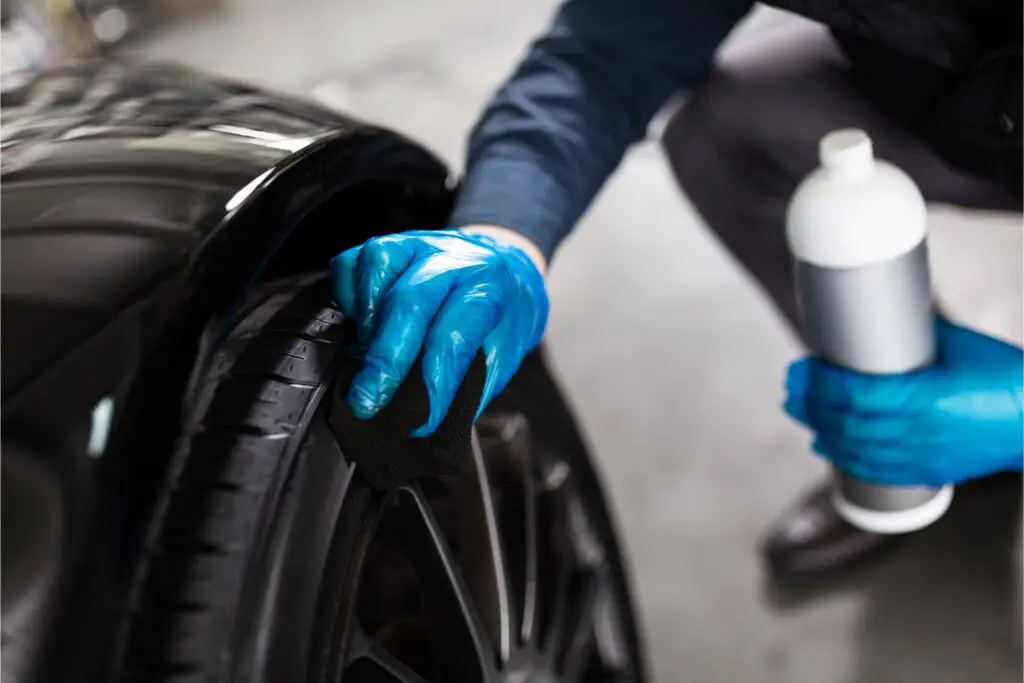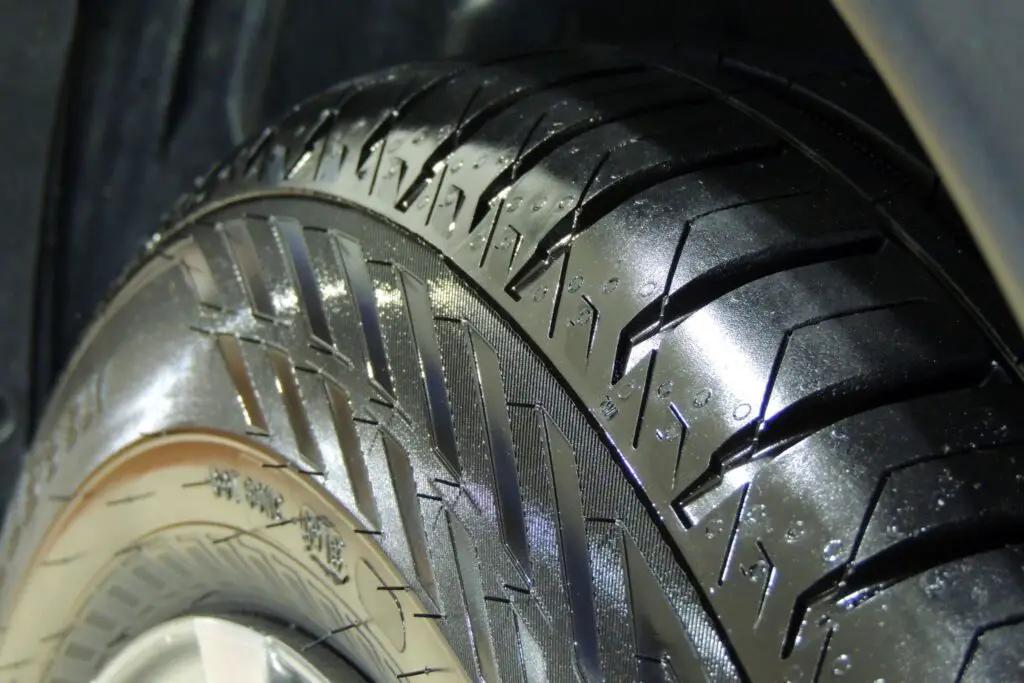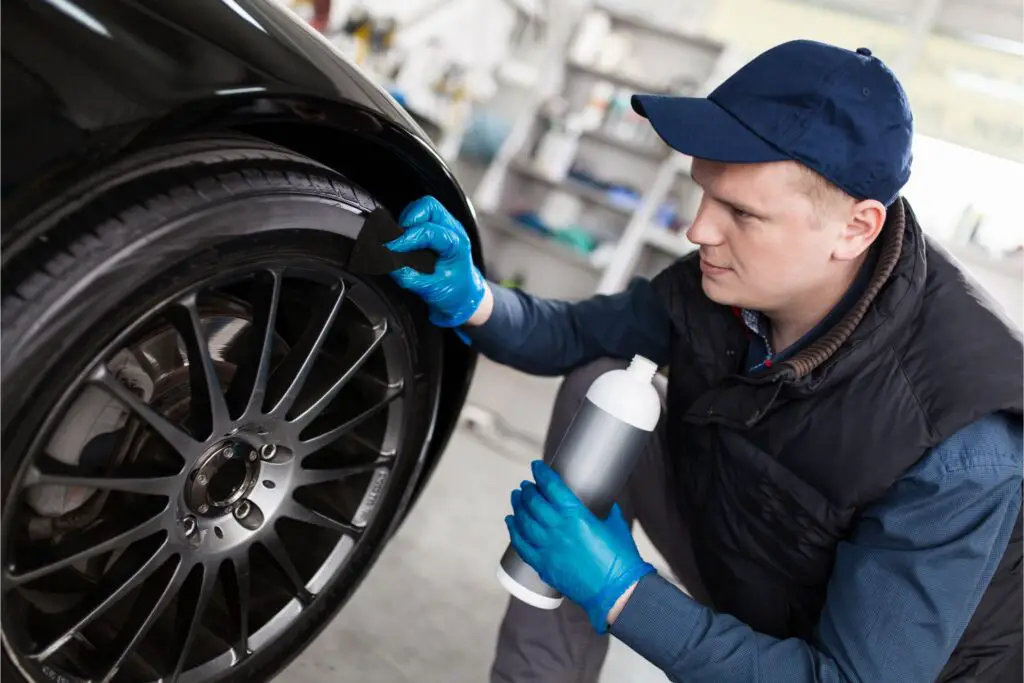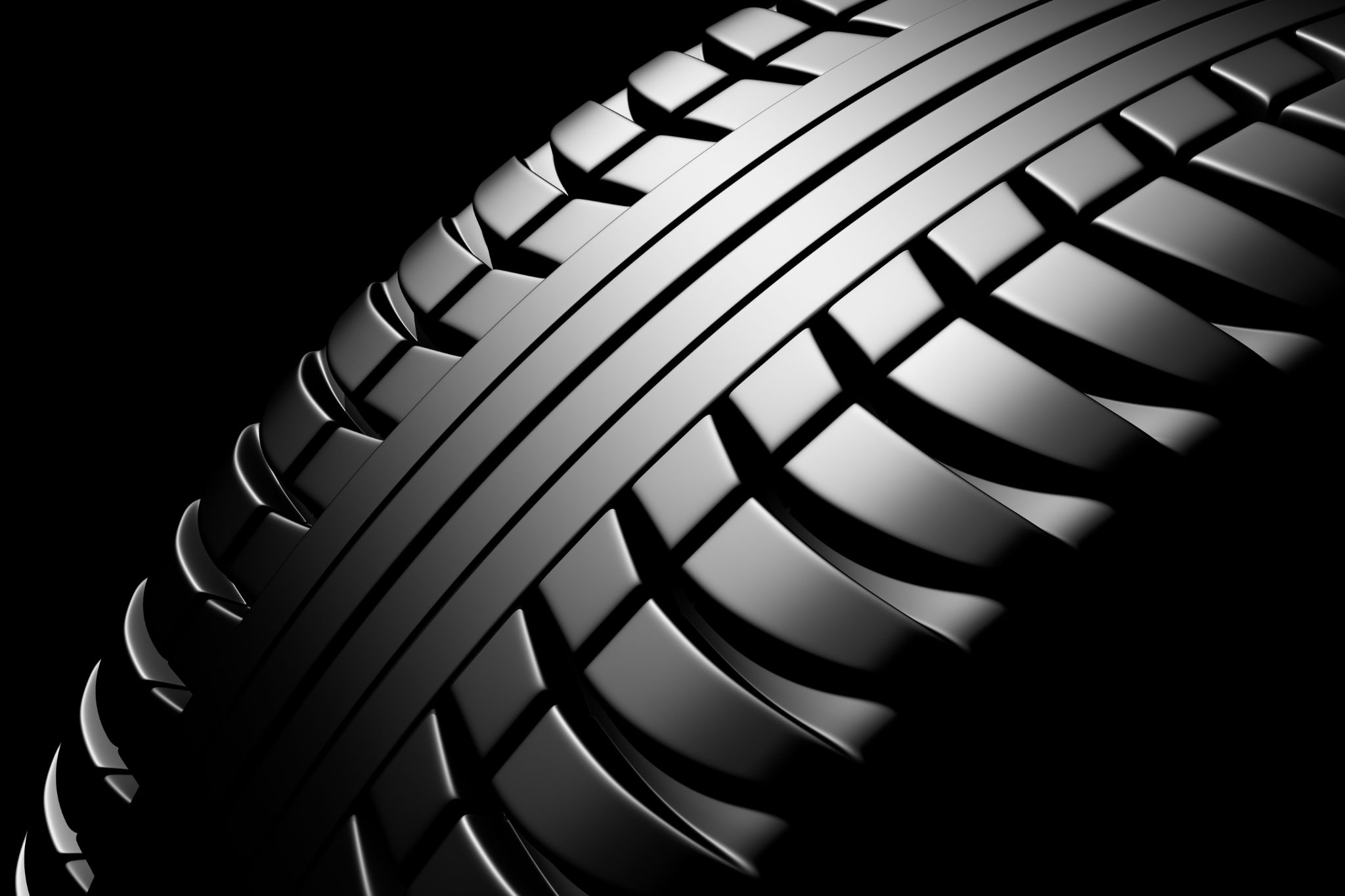Does tire shine cause tires crack? The question of whether tire shine causes tires to crack is an important one for any car owner.
Using the right products and techniques can prolong the lifespan of your tires while using the wrong ones could cause significant damage.
In this article, we will look at whether tire shine does indeed cause tires to crack, what causes dry rot on tires, and how to use tire shine safely.
Does Tire Shine Cause Tires To Crack?
So, does tire shine cause tires to crack? Tire shine is a product designed to make your car look shiny and new. However, the chemicals used in many tire shine can damage if not used correctly or with caution.
Tire shine contains petroleum distillates, which can break down the rubber of your tires over time and cause dry rot. This dry rot can lead to cracking in the tire walls and reduce their overall lifespan.
In general, the occasional use of tire shine is not likely to cause any significant damage to your tires. However, if you regularly use tire shine on your tires, it is vital to take some precautionary steps.
Use a tire shine formulated specifically for tires rather than one designed for other vehicle parts. Again, clean off any excess product to minimize contact time, and follow up with a coat of carnauba wax or a clear sealant for added protection.
Further info:
- Use a tire shine that is specifically designed for tires
- Clean off any excess product to minimize contact time
- Follow up with a coat of carnauba wax or a clear sealant for added protection
Trending Searches
Is It Okay To Get Tire Shine On Wheels?


Tire shine can be used safely on wheels if you take the necessary precautions. First, use a wheel-specific tire shine product designed specifically for this purpose.
These products are formulated with safe chemicals and will not damage your wheels or tires over time. Additionally, be careful to avoid getting any tire shine on the brake pads — the heat generated by braking can cause the product to vaporize and damage the parts.
It is also essential to clean off any excess tire shine from your wheels before they can dry. Any residue left on the wheel can attract dirt and grime, leading to scratches that may be difficult or impossible to repair.
Further, if too much product is left on the wheel, it can eventually break down the protective coating and cause corrosion.
Further info:
- Use a wheel-specific tire shine product designed for this purpose
- Avoid getting any tire shine on brake pads
- Clean off any excess tire shine before it has a chance to dry
Also Read: Can You Use Tire Shine On Rubber Floor Mats?
What Causes Dry Rot on Tires
Dry rot is a common problem that affects tires, and any number of factors can cause it. The most common cause is exposure to ultraviolet (UV) radiation from the sun.
Over time, UV rays will break down the rubber in your tire and reduce its overall strength. Other causes include incorrect tire pressure, excessive heat, and chemical damage from tire shine or other products.
In some cases, dry rot can be prevented by ensuring your tires are properly inflated and rotated regularly. Additionally, using wax or sealant on your tires can help protect them from UV radiation and chemical damage.
Finally, use tire shine products cautiously and do not leave excess products on your tires.
Further info:
- Exposure to ultraviolet radiation from the sun is a common cause of dry rot
- Make sure tires are properly inflated and rotated regularly
- Use wax or sealant to protect tires from UV radiation and chemical damage
- Use tire shine with caution and do not leave the excess product on tires
You May Also Like: Can You Use Tire Shine On Leather? Find Out
What Does Tire Shine Do To Tires?


From the perspective of what the tire shine is made of, the general goal of the application of tire shine on the sidewall of any tire is not to fix tire problems such as leaks, cracks, or dry rubber, rather, it is to improve the looks of the tire.
Tire shines have no repair capabilities. They are not for any other purpose aside from giving the tire sideways its lost glory.
They are applied to the tires with the hope of removing the old looks from the tires and making them look brand new once more. When directly done, this goal can be achieved without any harm to the tire in the form of cracks or other side effects.
As usual, there is no product without hearsay, superstitions and baseline assumptions, and claims. The tire shines is not an exception to this.
There are not of opinions on the trending tire shines used by many to enhance the looks of their car, and make the tires tidy and appealing to the eyes.
One of the prevailing principles or theories is that the chemical constituents of tires are such that they speed up the aging process of the tires upon which the shine is applied.
This is in addition to the claim of brown discoloration of transformation claimed to be caused by the tire shine. None of this however has any bearing on the tire shine but can be explained as the long-term effects of constant exposure to the ultra-violet rays of the sun.
How Does Tire Shine Cause Tires to Crack?
When cracks are noticed in the tires, whether this is seen following the application of the tire shine or not, it will be wrong to assume this was caused by the tire shine.
Tire shine is not ruled out completely as a possible cause of tire cracks, this is only however seen when the shine is not applied correctly. By not following the instructions or guidelines provided with the product, you may have contributed to the development of cracks in your tires.
How Do I Stop Tire Shine From Affecting Tires?
Most of all bottles of tire shine have written on them the guidelines for applying the shine on the tire. This guideline is to be followed stepwise and all precautionary measures stated in the bottle are adhered to. Avoid leading to controversies or taking advice or applying instruction from unauthorized sources.
When confused about the right thing to do, you may reach out to the manufacturing company of the tire shine through their company’s official website or seek the assistance of auto repair shops or dealers of the product who are reputable are trustworthy.
Tire shines have a limited time in which they keep the tires looking new, after which there will be a need for the application. One of the commonest mistakes done by some persons in this regard is to reapply the tire shine without first cleaning out the old.
The steps must include cleaning out the old shine and cleaning the tire and rim properly before application of the new tire shine. Without cleaning out the old shine, the new shine forms an additional layer along with the dirt and dust which may have accumulated on the old shine.
As noticed in the earlier part of the article, there are broadly two classifications of tire shine, the water-based type, and the solvent-based type.
The solvent here could range from oil, and silicon to petroleum. No is free if drawbacks especially when the user refuses to follow the right steps. This is the case with the various types of tire shine mentioned above.
Following evaluation of the alcohol-containing tire shine, it can leave the tire’s rubber fabric to try enough to cause cracks in the tire.
The petroleum-containing tire shine is not free of drawbacks as well. Although cheaper than most, it is flammable and therefore relatively unsafe depending on usage.
This explains the promotion of the water-based tire shine. It is more eco-friendly, easier to apply, user-friendly, prevents the sidewalls from fading, and it’s biodegradable.
When the shine is applied to the tire, some considerable amount of time should be allowed for the shine to dry up, else, it may sling off the tire onto the body of the car, where it may adversely affect the car paint and defeat the purpose of its application- to improve the looks of the car.
Also Read: Can Tire Shine Damage Paint?
Prevention and Mitigation: Tips for Using Tire Shine Safely
Using tire shine properly can help you get the most out of your tires without causing any damage.
Here are reliable tips to keep in mind when using tire shine:
- Make sure to use a tire shine designed explicitly for tires and not for other parts of the vehicle. This will ensure you get the most effective product without any long-term damage.
- Clean off any excess tire shine with a clean cloth before it can dry, as this can help prevent dirt and grime from accumulating. Moreover, follow up with a coat of carnauba wax or a clear sealant for added protection.
- Be careful to avoid getting any tire shine on brake pads, as this can cause vaporization and damage them. Additionally, pay extra attention to any areas of your wheel that may be exposed to heat, such as the brake caliper.
- Finally, use tire shine sparingly and do not leave the excess product on your tires. This can cause the rubber to break down over time and lead to dry rot.
Should tire shine be used on tires?


Is it compulsory to apply shoe polish when you put on your shoes? No. This is because the shoe Polish does not stop the shoe from performing its primary function of covering your feet and protecting them from harmful objects.
Similarly, there is no rule that tire shines must be applied to all tires, rather, its application is simply for aesthetic purposes and a part of caring for the tire. there are however other ways of caring for the tire which does not involve the application of tire shine.
This includes routinely washing the tires, not loading up too much luggage, keeping an eye on the tire pressure, and doing a monthly measure of the tire’s PSI, amongst other practices.
Conclusion – Does Tire Shine Cause Tires Crack
Tire shine can be an excellent tool for keeping your tires looking new. Just make sure to pay attention to the instructions on the product label and use it cautiously.
Follow these tips to ensure your tires stay in good condition and don’t succumb to dry rot: use a tire shine designed explicitly for tires, clean off any excess product before it has a chance to dry, avoid getting any tire shine on brake pads, and apply sparingly.
With regular care and maintenance, you can keep your tires looking new for years to come. Regularly inspecting and maintaining your tires is the best way to ensure they will last as long as possible.
Investing in a quality tire shine product and following the instructions on its label can help ensure your tires look their best for years to come.
This post contains affiliate links. Read the full disclosure here.


I am passionate about all things automotive and have a deep understanding of the topic. As a mechanic, I use my free time to share knowledge of everyday challenges that any car owner can experience – helping you make informed decisions about tires.

